Our comprehensive guide on how to store your cannabis edibles to get the most potency and freshness.
What are Edibles?
Cannabis edibles contain cannabinoids that you can consume by eating or drinking. Cannabinoids are chemical cannabis compounds found in cannabis that can affect your mind and body after consumption. THC (tetrahydrocannabinol) is the primary cannabinoid that makes users feel high.
Types of Cannabis Edibles
Here are some of the most common types of edibles you’ll find online and at your local dispensaries:
- Beverages
- Baked Goods (brownies, cookies)
- Gummies
- Gourmet Candy
- Hard Candy
- Savory Snacks
Benefits of Cannabis Edibles
The potential benefits from medical treatment with cannabis are vast. Specific cannabinoids can produce a therapeutic potential for patients with different health conditions.
Peer-reviewed studies suggest that cannabinoids have varying health benefits. They have been used throughout history to manage various health concerns and ailments. While research continues, more evidence suggests that cannabis and cannabinoids can be very beneficial to human health.
A few studies offer information that suggests specific cannabinoid combinations act with different compounds to provide the following potential benefits:
1. Addiction Treatment
2. Appetite Stimulation
3. Sleep Aid
4. Muscle Function Improvement
5. Seizure Control
6. Pain management
7. Anti-inflammatory benefits
Studies are being done worldwide to see how cannabis may aid in fighting cancer and slowing down tumor growth and if cannabinol delays symptom onset for certain chronic pain conditions involving peripheral analgesics.
Different cannabinoids are also being looked at as options that may benefit those who suffer from autoimmune diseases such as rheumatoid arthritis, lupus, Crohn’s disease, multiple sclerosis, and HIV/AIDS.
Potential Risks
There aren’t many known side effects for CBD, and most side effects from marijuana come from higher doses and long-term use. Weed can over-activate parts of the brain that contain the highest amount of cannabinoid receptors, which causes the intoxicating effects known as a “high.”
Marijuana also affects brain development if used at an early age. When people begin using it as teenagers, it can potentially impair cognitive functions and affect how the brain connects and communicates with other body areas.
Other adverse side effects include:
- altered senses
- altered sense of time
- mood changes
- impaired body function
- slowed memory and thinking skills
- hallucinations or delusions (high doses only)
- psychosis (high doses, significant long-term use only)
History of Cooking with Cannabis
Author and cannabis edible expert Robyn Lawrence shares her extensive knowledge by offering readers access to information that can assist people with using cannabis as a culinary tool. Through her books, workshops, events, and media, she has impacted people all over the globe with her independent voice and ideas.
Here are some takeaways from her timeline of cannabis usage in edibles throughout history:
Cannabis use in edibles dates back to the Middle Age, over 50,000 years ago. Marijuana is considered one of the first plants humans explored for consumption and medicinal purposes. Ancient India held the “origin of edibles” through a hash-filled confection called mahjoun.
In Medieval times, Uzbekistan created guc-kand with THC for pain relief and sexual performance. Indonesia used marijuana in a toffee candy called dodol Aceh, while Cambodia infused Khmer foods with cannabis. Greece had khylos, a cannabis-infused wine steeped for several days.
The Polish would combine cannabis seeds with salt, olive or coconut oil, and cannabutter and place it on a piece of crusty bread. Since then, as medical marijuana and recreational legalization grow in popularity, cannabis has been used to make edibles more than ever before.
FAQs- Cooking with Weed
Decarb before adding ground cannabis flower. If you don’t, the vegan butter will not taste ideal, and it will be less potent because the cannabinoids do not have time to be fully activated. Low heat is the way to go with this process for the best marijuana and the most delicious recipes.
Get the grind right. It’s suggested to use a hand grinder or coarse coffee grinder for optimum results when grinding your hemp.
Be patient when straining the cannabis oil. A cheesecloth, gravity, and time are the three ingredients needed to strain your marijuana-infused butter properly. Do not squeeze the cloth at the risk of adding in excess plant matter.
Mix the batch well. Remember to occasionally stir when making vegan baked goods and such products with this cannabis butter recipe for an even level of THC potency and flavors.
Best Edible and Cannabis Oil Brands
- Good Co-Op Brownie
- Peanut Butter S’Mores 4.20 Brownie
- Lifted Superfood Brownie Bites
- Black Label
- Baked Bros
- Liquid Karma
- Charlotte’s Web CBD oil
- CBDistillery Full Spectrum CBD oil
- Bud Pop Organic CBD oil
Top Strains for Edibles
The best cannabis strain to choose depends on at effects you’re looking for; however, some strains have sweeter seeds and better flavor profiles than others, making them ideal to use for cannabis-infused edibles.
Here are ten of our favorite strains of different THC and CBD varieties:
- Purple Kush
- White Widow
- OG Kush
- Blue Dream
- Durban Poison
- Super Lemon Haze
- Skywalker OG
- Sour Diesel
Sign up at Leafy Rewards to receive special offers direct on marijuana and hemp deals from our affiliate partners and popular cannabis brands across the nation.
Factors that Effect Weed Edibles
Cannabis plants naturally dry and become less potent and flavorful over time, so storing edibles properly in an airtight container is essential to keep the edibles fresh.
You can use marijuana butter immediately to make baked goods and many recipes. Infused butter and cannabis oil have a shelf life of up to six months in the refrigerator and up to a year in the freezer when adequately stored in airtight plastic containers or sealed glass containers.
Creating homemade cannabis products can be very challenging if you aren’t already an experienced and passionate cook.
The primary objective is to find edibles that meet your specific recreational needs and provide optimal clinical effects, so whether that’s yours or someone else’s, consider both pros and cons.
Storage Tips
There are multiple ways to store marijuana edibles; however, it greatly depends on the type of edible you will be placed in storage. We have covered marijuana butter, so let’s review a few other edible types and their shelf life.
For cannabis brownies, it’s best to store edibles with wax paper in airtight silicone containers. If you plan to freeze edibles, cover in plastic wrap and place in sealed, zip-up plastic bags for best results. These will maintain their full potency for about two months when stored properly and can successfully be stored for up to six months.
With medical marijuana tinctures, it’s best to keep them in glass jars at room temperature in a dark place. Storing like this will keep it fresh for a few months. While you can freeze tincture in airtight containers, it also doesn’t maintain the integrity of the oil.
When storing cannabis gummies, they typically last up to a year without being frozen, but the potency will decrease over time. If you are going to store gummy edibles, wrap them up and place them in an airtight container before deep freezing them for the best results.
Summary
There are ways to store cannabis edibles to maintain potency and fresh flavors. The most important thing to remember is to keep the cannabis buds appropriately from the harvesting process to the completed weed edible product to ensure you maintain safe, potent, and tasty cannabis products.

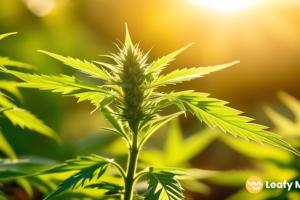
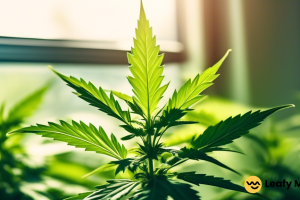





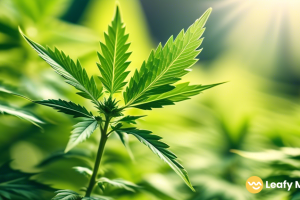
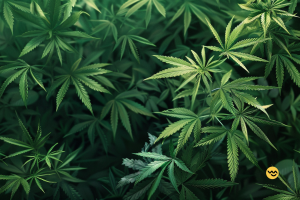
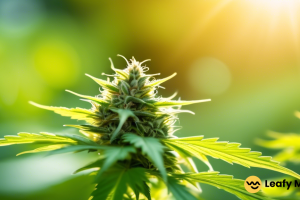
Leave a Reply